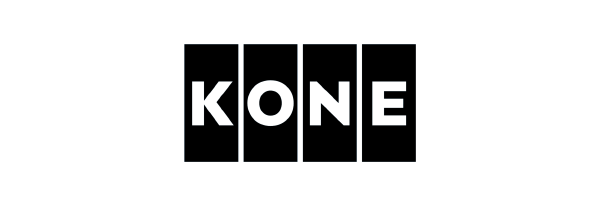Study Abroad in Finland for Pakistani Students: How To Apply
Finland offers an exceptional educational experience for international students, including those from Pakistan. Known for its high-quality education system, innovative teaching methods, and stunning natural beauty, Finland provides a unique opportunity for Pakistani students to broaden their horizons and gain a world-class education.

Highlights
Here are the key details related to studying in Finland
500+
Pakistani Students in Finland
90%
Visa Approval Rate
38
Total Institutions
Fall
Most Preferred Intake
6.0
Minimum IELTS Score
78
Minimum TOEFL (iBT) Score
PKR 12L
Approximate Annual Study Cost
PKR 2L
Approximate Monthly Cost of Living
Why Choose Finland?

Innovative Learning
Experience Finland's cutting-edge teaching methods, emphasizing critical thinking, problem-solving, and practical application of knowledge.

Research Opportunities
Finland is a leader in research and development, providing excellent opportunities for students to engage in groundbreaking research.

Safe Environment
Finland is consistently ranked as one of the safest countries in the world, ensuring a secure and peaceful study experience.
Wondering If Pakistan is right choice for you?

Variety of courses available in Finland
Bachelor's Degrees
3-4 years
Master's Degrees
2 years
PhD Programs
4 years
University of Applied Sciences Degrees
3.5-4 years
Short-term Programs
Varies
Academic Calendar to study in Finland
Here’s what to expect if you want to study in Finland
Autumn Semester (August/September - December)
This is the main academic term, featuring a range of courses and campus activities. Be prepared for the onset of cooler weather.
Winter Break (December - January)
Enjoy the festive season and experience the magical Finnish winter.
Spring Semester (January - May)
Continue your studies in the new year, with longer days and the beautiful Finnish spring.
Summer Break (June - August)
Take advantage of the long summer days for travel, internships, or summer courses.
Student Visa Requirements for Finland
You can prepare for your Finland education journey with these essential visa requirements
- Acceptance into a Finnish educational institution
- Sufficient funds to cover tuition and living expenses
- Valid health insurance
- Clean criminal record
- Valid passport
Completed visa application form - Acceptance letter from a Finnish institution
- Proof of financial resources
- Health insurance certificate
- Passport-sized photographs
- Academic transcripts and certificates
- Proof of language proficiency (usually English or Finnish)
- Statement of purpose
- Letters of recommendation
Admission Requirements in Finland
General Documents required to study in Finland
Must be valid for the duration of your stay in Finland.
Official admission letter from a Finnish educational institution.
Bank statements or scholarship letters showing sufficient funds.
Official records of your previous academic achievements.
IELTS, TOEFL, or other accepted language test scores.
An essay outlining your academic goals and reasons for choosing Finland.
Strong references from teachers or employers.
Proof of comprehensive health insurance coverage.
English Language Proficiency to Study in Finland
Finland universities typically accept the following English language tests:
IELTS
6.0 and above (some programs may require higher scores)
TOEFL iBT
78 and above
PTE Academic
51 and above
C1 Advanced (CAE)
Grade C or above
Other Requirements For
- Master Program
- Bachelors Program
- Bachelor’s degree in a relevant field
- Minimum GPA of 3.0 or equivalent
- Some programs may require work experience
- GRE or GMAT scores may be required for certain programs
- High school diploma or equivalent
- SAT or ACT scores may be required by some universities
- Proof of English proficiency
- Application fee (varies by institution)
Cost of Studying in Finland
Overview
Finland offers tuition-free education for EU/EEA students, but non-EU/EEA students, including those from Pakistan, are required to pay tuition fees. However, many universities offer scholarships to help offset these costs. It can vary greatly depending on the university’s
- Location
- Reputation
- Program
Average tuition fee range
Bachelors
PKR 6L - 16L
Masters
PKR 8L - 20L
MBA
PKR 12L - 25L
PhD
Often funded through research positions or scholarships
Cost of Living in Finland
Monthly living expenses for students in the Finland (in PKR):

Accommodation
80K+ / month

Food
45K+ / month

Transportation
15K+ / month

Other Expenses
35K+ / month
Scholarship for Pakistani students in Finland
Here are the key details related to studying in Finland
If you are going to study at a Finland university, you should be aware that tuition fees can vary depending on factors such as the type of institution, program of study, and location.
Finland Government Scholarship Pool
3,000,000
EDUFI Fellowship
2,500,000
Aalto University Scholarships
4,000,000
University of Helsinki Scholarships
3,500,000
Tampere University Scholarships
3,000,000
See what our students say
Frequently Asked Questions
Yes, many Finnish universities offer programs entirely in English, especially at the master’s level.
While not required for most English-taught programs, learning basic Finnish can enhance your experience and job prospects.
Yes, international students can work up to 25 hours per week during term time and full-time during holidays.
While living costs can be high, Finland offers high-quality education and many universities provide scholarships.
Finland has cold winters and mild summers. Winter temperatures can drop below -20°C, while summers are pleasant with temperatures around 20°C.
Yes, Finland offers a one-year residence permit for job seeking after graduation.
Finland is consistently ranked as one of the safest countries in the world, with low crime rates and high quality of life.
Students are required to have health insurance, and Finland offers high-quality healthcare services.
Universities often assist with finding student housing, or you can look for private rentals through online platforms.
Application deadlines vary, but for autumn intake, it’s typically in January, and for spring intake, it’s around September.











